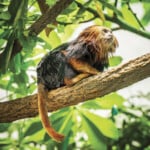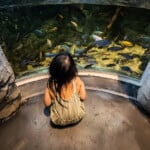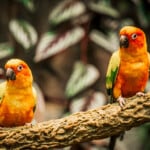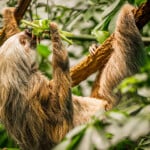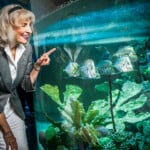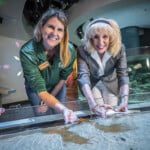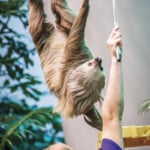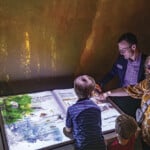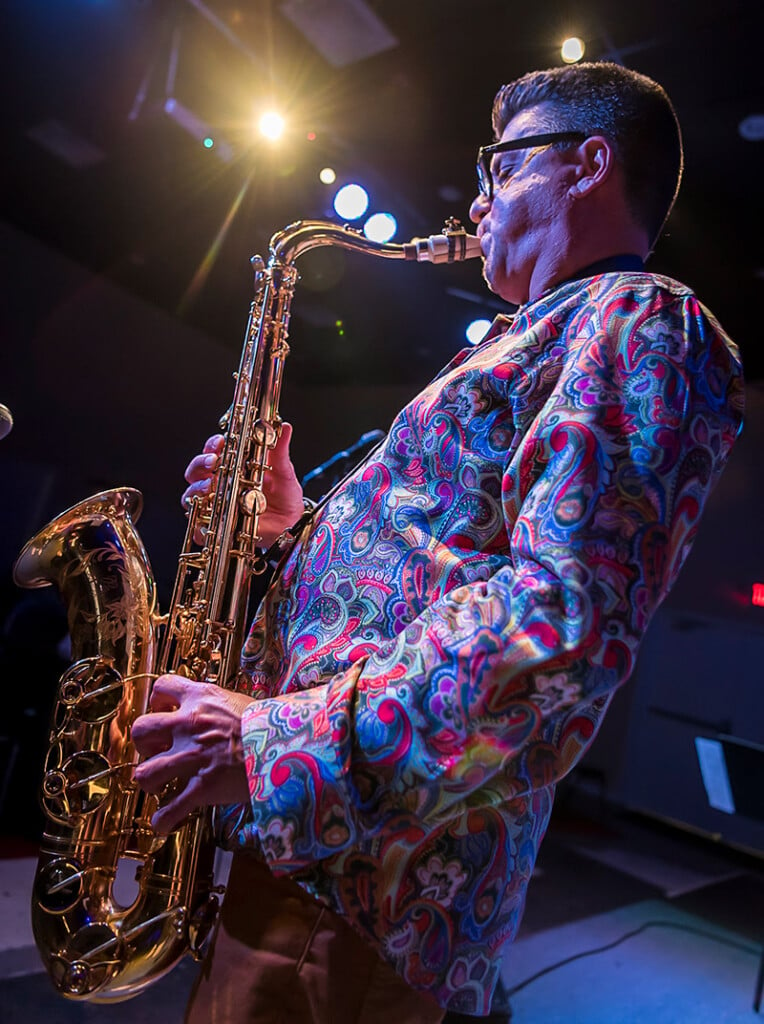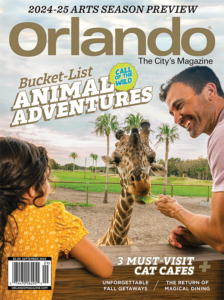Orlando Science Center: Coming to Brilliant New Life
This multimillion dollar exhibit at the Orlando Science Center is all about the animals., but let's take a step back first to where this all started.
It was the summer of ‘98 and I was 14, visiting the new Orlando Science Center (OSC) for the Star Trek traveling exhibit. At the time, I was more into Klingons and Borg than animal husbandry, and while browsing the many Starfleet-inspired attractions, I noticed something peculiar; most of the employees were young. Being a rather quiet and shy teen, it took me far too long that day to approach one of the younger people working the exhibit, with their official-looking name badges and multi-colored lab coats, but when I did, I heard those four magical words “you could volunteer, too.”
And that is exactly what I did; before even leaving the building that day, I had filled out the required paperwork, and was told to wait for a call. It didn’t take long for the phone to ring, and for my first day in NatureWorks to begin.
NatureWorks, as it debuted in 1997 and ran through 2022, represented different ecosystems within Florida. A cypress grove swamp housed American Alligators, Alligator Gar, Red-Eared Sliders and even an Alligator Snapping Turtle named Matilda. Then came the mangrove swamps, with their brackish water and unique transitional aquatic species like diamondback terrapins. From there you would venture to a large saltwater tank, filled with a myriad of native saltwater fish. Once a month we would wear wetsuits, get inside the tank, and scrub the algae off the fake coral and thick acrylic plastic scratched by too many tiny fingers tapping the glass to attract any of the dozens
of fish in the tank.
It’s been 26 years since that first day in NatureWorks, and things are looking a little different lately. Well, a lot different. And that’s not necessarily a bad thing. In April, the Orlando Science Center debuted their largest renovation to date; the new Life exhibit, a $13.5 million reimagining of two original spaces on the center’s first floor. Life replaces what was once NatureWorks and the original KidsTown. Nearly 10 years in the making, Life is a culmination of generous donations by many local philanthropists and corporations, including the largest single donation in the center’s history by Dr. Sarah Layton, a corporate consultant and philanthropist. Her $3 million contribution helped this reimagining come to fruition. This expansion is part of an even larger $35 million funding goal, known as the Unlock Science Campaign, to increase access and resources through new exhibits. Dr. Layton told us this exhibit “brings a dream full circle. As a poor kid from Miami, I loved insects and animals from an early age. I’m grateful to have been able to work with a great philanthropist and was inspired to do the same. I created a foundation, and I began raising money. I like to pick a project that I can contribute to.”
We were joined by Shannon Zimmerman, curator of Conservation and Welfare at OSC, for a tour of the new exhibit. She walked us through many of the design elements that so cohesively blend in this new space. As you step into the exhibit, she notes, one simply needs to look up to see what path they should take. Birds guide you to the Rainforest, dragonflies bring you to the Swamp, and fish usher you to the Ocean. The exhibit boasts twice the staff of the previous NatureWorks, allowing for more interaction, oversight and educational experiences for guests of all ages. In total, nearly 300 animals call this new exhibit home.
We ventured first into the Swamp, where the only part of the original NatureWorks remains, the cypress swamp. Redeveloped with more sunning spots for the turtles and alligators, and higher walls for safety, the swamp is still home to Florida native and invasive species alike. The Swamp also houses a pair of Barred Owls, native to Florida. Zimmerman noted their environment had been impacted by sprawl in Central Florida, but in areas like Naples, their populations were still thriving. A pair of gopher tortoises who have been at the center for years, have a habitat near the owls. Like the owls, these tortoises are native to Florida. They are considered a keystone species, as their boroughs are home to hundreds of animal species. Although threatened, conservation efforts are being made across the state, like the Florida Wildlife Corridor Foundation, a statewide network of 18 million acres of connected lands and waters that supports wildlife and people. Overhead, Sherman’s Fox Squirrels run along mesh tunnels for a bird’s eye view of visitors.
Next, we journeyed into the Ocean. This area houses a 10,000-gallon saltwater aquarium with a nearly 360-degree view, much more than the previous tank offered. It is home to dozens of native species including tang, angel fish and even a juvenile bonnethead shark. A touch tank on the other side of the exhibit allows guests to get up close and personal with some real-life sea creatures. From starfish to mollusks, you are bound to discover something amazing. Visitors can also try the Sealife Kaleidoscope, an interactive station where ocean items can be used to create a larger-than-life projection on the wall. Another educational exhibit delves into the massive coral reef loss Florida has experienced in recent years. A porthole positioned strategically at a child’s height allows guests to view live coral growing.
Another feature in both Ocean and Swamp are two Magic Books. These interactive books bring stories to life through watercolor projections. The Ocean version takes you on a journey through a Caribbean dive log.
The Rainforest section of Life is separated by two sets of doors, limiting the possibility of an “escape” by the animals inside into the open area of the science center. Guests are limited in this space and must review the rules prior to entering. This multi-story enclosure extends into the atrium, and even offers views from the gift shop. We spotted Izzy right away, a two-toed sloth who was ready for the spotlight. Zimmerman told us she had been in the exhibit for approximately three months, acclimating to her new space. Izzy is target-trained, allowing her handlers to interact with her without touching her. Positive reinforcement, along with a whistle, cue Izzy that she has done a task correctly. This training allows Izzy to have a safe experience within the exhibit.
Another change visitors may notice is the humidity. The Rainforest is temperature-controlled for the animals’ comfort. It is also home to dozens of real plants and trees, offering a more natural habitat for the animals that live here. After a delightful visit with Izzy, we saw two playful tamarin brothers climbing and exploring each branch. A 17-foot-tall waterwall on the opposite side cascades into a pool of chiliads, while tanagers, honeycreepers and blackbirds fly overhead. Guests are asked to always stay on the path and respect that they are guests in the animals’ home.
When asked what she hoped this project would do in the long term, Dr. Layton says, “we hope to bring about the next generation of conservationists and nurture a respect for the natural world.”
Planning a visit to Life? Dr. Layton suggests you take your time exploring the three new spaces “don’t run, go slow. Take it all in.” osc.org

